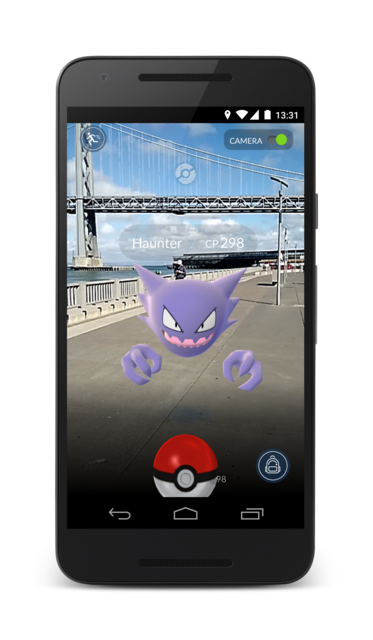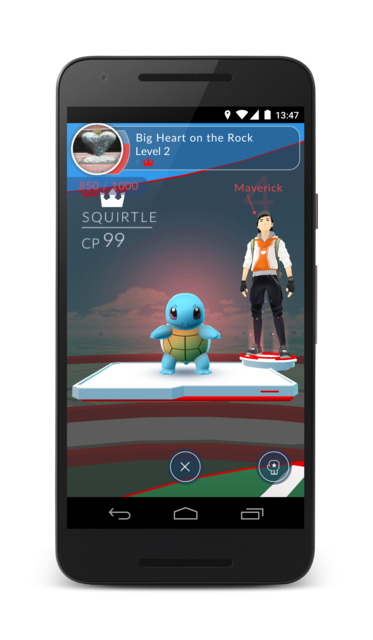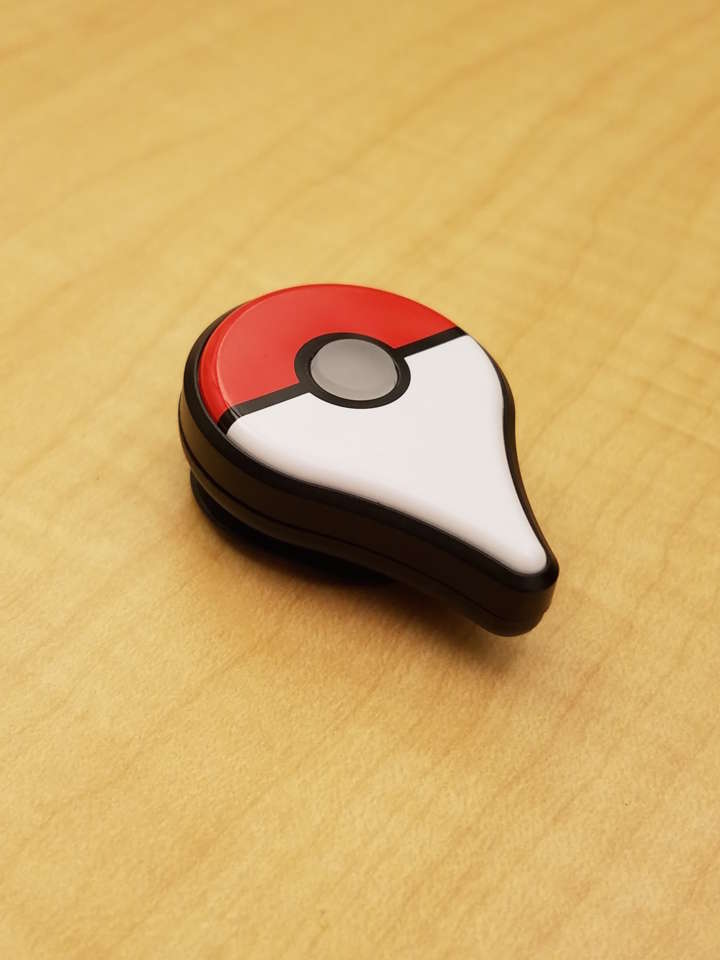When Pokemon Go was announced, I was initially skeptical. Most augmented reality games come across a little gimmicky, and with Pokemon I was concerned the outrageous, cartoony aspect of the series wouldn't mesh well with tramping around the real world. I've been holding out hope for a Pokemon Snap sequel on Wii U, and when a representative for The Pokemon Company told GameSpot this mobile creation would "scratch that itch," I was doubtful. After an hour or so using the app through San Francisco's Soma area, Pokemon Go didn't quite quench my thirst for Snap, but it did dispel my doubts about its merits.
Built by developer Niantic on the backbone of its last AR game, Ingress, Pokemon Go is a smart adaptation of the beloved franchise that rewards physical movement--walking, running, traveling--with handfuls of Poke-goodies. Your smartphone or tablet becomes your Pokedex, your inventory-storing PC, your egg incubator, your method of finding and fighting Pokemon. There is so much to do in Pokemon Go, and even when you're not actively staring at your screen the app is quietly running, locating creatures and gathering items as you move through the world.
While elements such as trading Pokemon between players and special events are still in the planning phrase, here are six things we learned about Pokemon Go that show Niantic's mobile game is a smart AR adaptation of the beloved RPG franchise.

1. Pokemon are tied to locations by geography and environment. While walking along the Embarcadero, looking out over the San Francisco Bay, we found Tentacool and Magikarp hanging out along the railings, and even a Squirtle playing the grass on the other side of the street. The developers explained that Pokemon of certain elements will be in specific areas--so water Pokemon will appear around bodies of water, while other environments like rainforests, mountains and deserts will harbor their own unique Pokemon types. You'll find a lot of Pokemon in parks. When the app detects a Pokemon nearby, your phone will vibrate, even if you're not actively looking at it. To catch a Pokemon, you look at your phone and use your finger to swipe a Pokeball in their direction--direct hits will often catch them in one try, but it may take several Pokeballs to finally acquire a Pokemon.
The developer assured us that Pokemon will not be placed in unreachable locations--like inside a volcano or at the north pole. (We actually found a Vulpix just hanging out in a park). Nor will they be placed in dangerous locations, like the middle of an intersection. Pokemon will be wherever people can go. They team is still deciding what to do with Legendary and rare-type Pokemon.
Niantic said that for now, it is launching Pokemon Go with only Pokemon from Generation 1. How and when it adds more Pokemon in the future is still in discussion. Each Pokemon has its own height, weight, and combat power (or CP), and it's possible that you and another player simultaneously in one location won't catch the exact same Pokemon.

2. Items collection and Pokemon gyms are found at historical and artistic landmarks. Walking along the sidewalk beneath the Bay Bridge, we found a Poke-Stop, a location where you collect items. The app lit up as we got closer to the spot, and even flashed a picture of the exact landmark to look for: a series of metal plates built into the sidewalk on Harrison Street. These locations are pulled from the same data set used for Ingress, so if you're familiar with that game, you'll know where to expect Poke-Stops: culturally interesting places, such as monuments, sculptures, and public artworks will be the place to collect items and replace your Pokeball stores.
3. Hatching eggs is tied to walking distance--the same as in the video games. Sometimes you'll get an egg at a Poke-Stop. Each egg is labeled with how far you need to walk for it to hatch--2 kilometers, 5 kilometers, and so on. To incubate an egg, you must find or purchase an incubator and place the egg inside, then leave the app running (it can be on in the background) while you walk. The dev team is still working out the different types of incubators, as well as how many eggs you'll be able to incubate at one time--in our demo, we had two incubators running at once.
4. Evolving Pokemon requires you catch more of them. Every Pokemon caught comes with one Evolution Shard and requires a specific number of them to evolve. For example, to evolve Pikachu to Raichu, you will need to catch 15 more Pikachus in order to collect 15 more Evolution Shards. According to the team, there will be a cap on how many Pokemon you can catch and hold, but once you have all the Evolution Shards you will be able to set redundant Pokemon free to make space.
5. Pokemon Gyms aren't NPC fighting rings--rather they are asynchronous multiplayer PvP areas. Pokemon Gyms, like Poke-Stops, are also tied to monuments and other well-known sites. During our demo, we found a gym at the Cupid's Arrow sculpture along the Embarcadero. Looking at our map, I saw that there were several Pokemon Gyms along the Bay--including ones at the Ferry Building and Fisherman's Wharf.
Rather than everyone who comes to the gym fighting the same NPC trainer, gyms are controlled by factions. When you first sign up for Pokemon Go, you will be asked to join a global team: Red, Blue, or Yellow. Every gym you visit will be controlled by one team. If the gym is controlled by your team, you can register and train your Pokemon there. If the gym is controlled by one of the other two teams, you can battle against the gym in a bid to gain control.

Each gym has two attributes: prestige and a level. The level represents how strong its Pokemon are. Prestige is more like health points, and the higher the number, the longer the gym will be under the control of its reigning team. To bolster the prestige of a gym, go to one controlled your team and train. The higher the prestige level, the more Pokemon can be registered at the gym. To wrestle control away, opposing teams can battle against the gym, knocking down its experience rating with every successful battle.
Multiple players can battle against a gym at once. When asked, the studio said the cap is "many." In our demo, two players (using iPhones and standing a few feet apart) battled against the gym's Pokemon. On both screens, we were able to see both players' Pokemon fighting at the same time. To launch attacks and dodge, you have to tap and swipe the screen much in the same way you use to launch a Pokeball.
6. Pokemon Go players can use a small clip-on device to collect items and catch Pokemon without keeping their phone out. As long as the app is running, players can still collect goods without actively using their phone by using a small clip-on device similar to a FitBit. When players pass a Poke-Stop or Pokemon on their commute, a small light on the device will light up--what color it is depends on what you're passing, be it creature or consumables. You press the light to collect whatever it is, and then when you're safely at your destination you can check your phone to see what you got.
Niantic is hoping to bring lapsed Pokemon fans back into the fold with Pokemon Go, as well as encourage current Pokemon fans to socialize with one another. With a beta coming up, we're eager to get more time with the app and see what other Pokemon are lurking in our neighborhood.




























